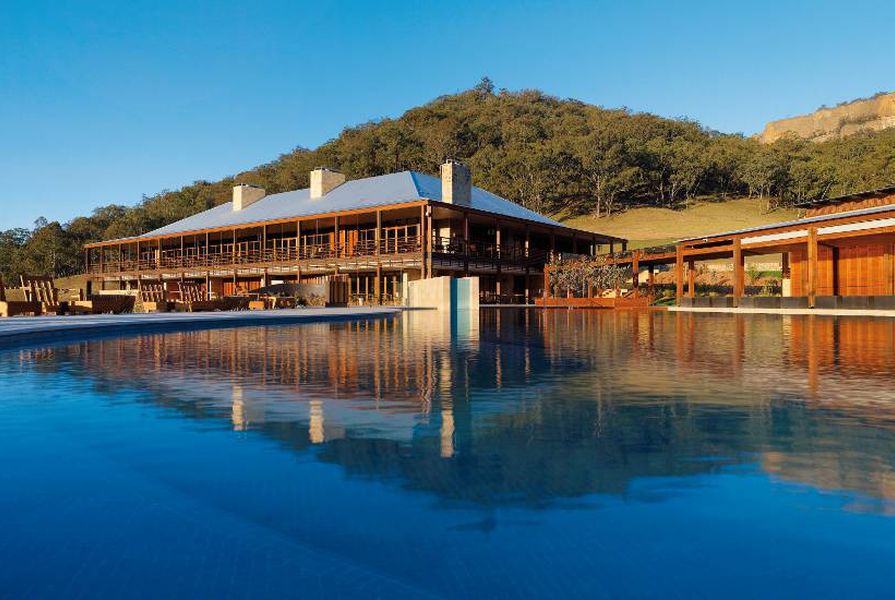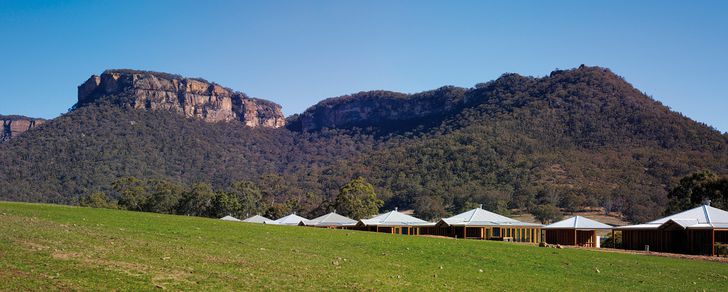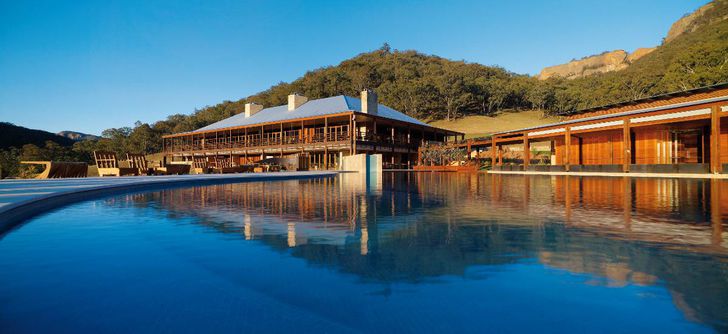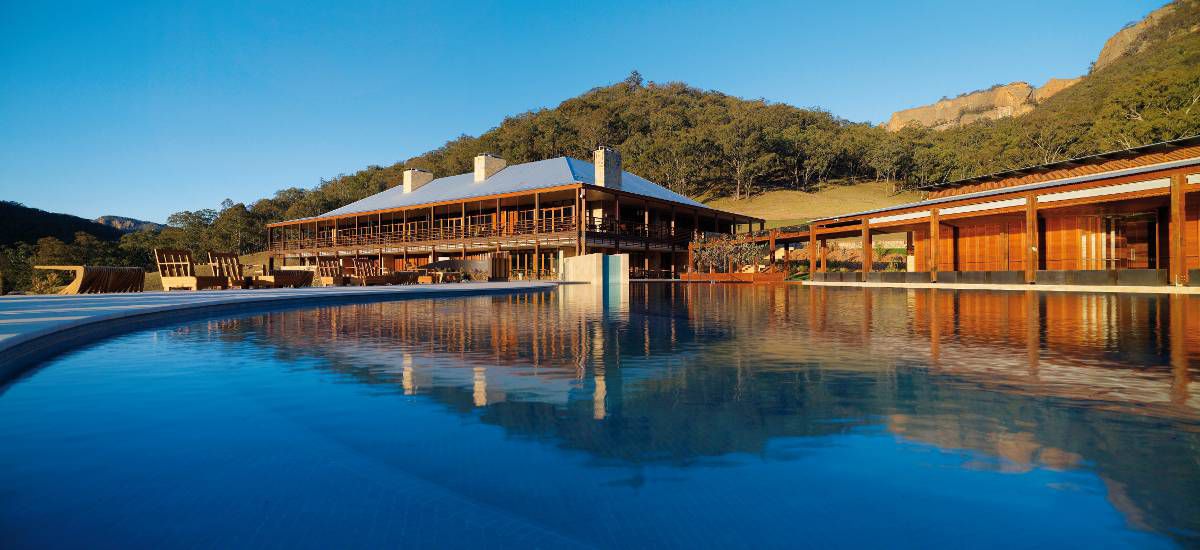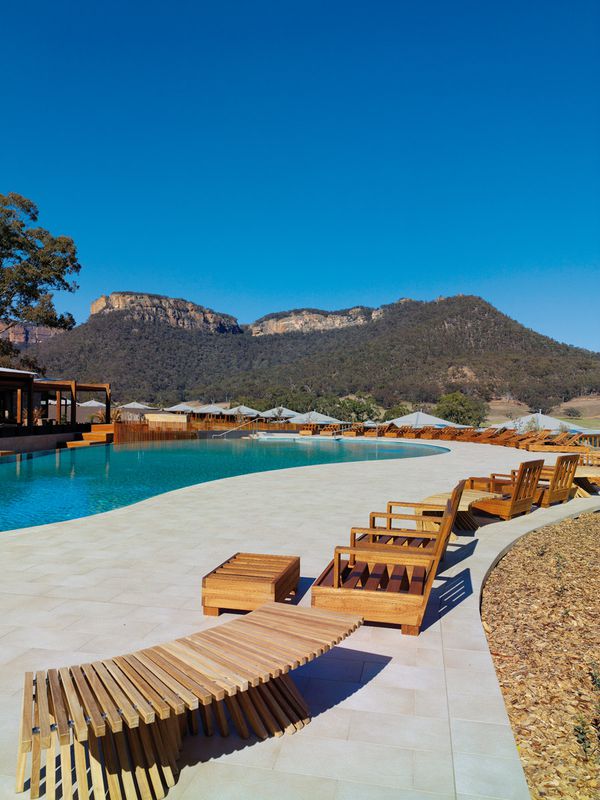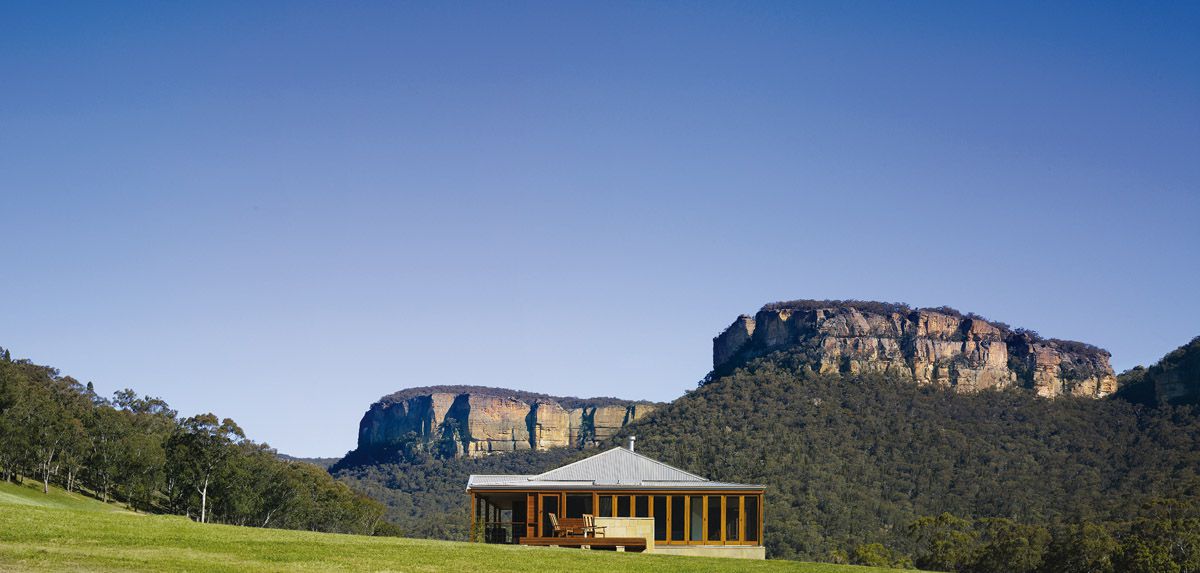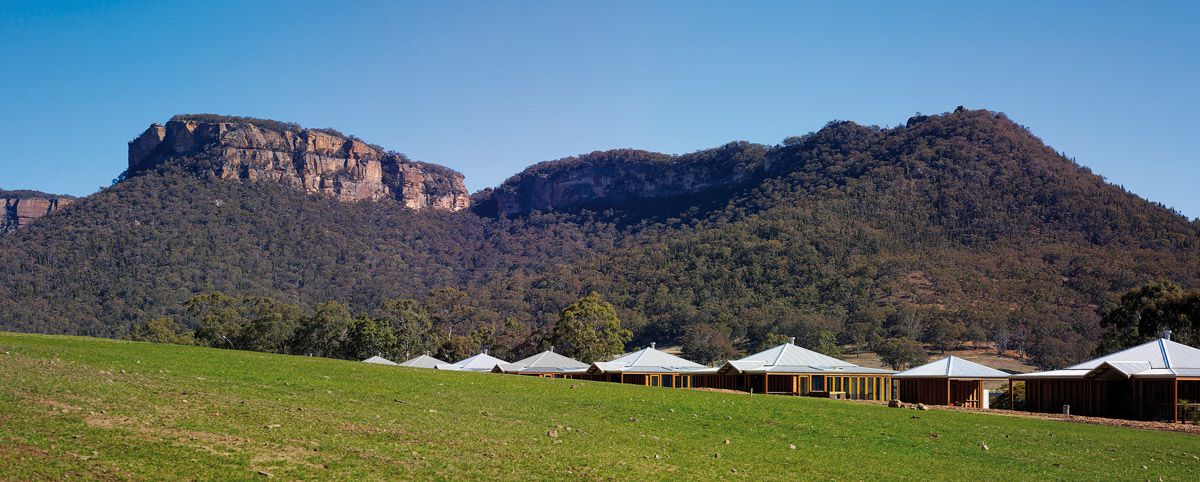The Wolgan Valley, located in the Blue Mountains of New South Wales, is an instantly remarkable and impressive landscape setting, and its recent transformation from degraded pastoral land to six-star conservation-based resort is worthy of a few remarks too. Emirates Hotels and Resorts has spent $125 million in the belief that the high-end travel market is willing to pay a premium (at least $1950 per night) for the privilege of consuming nature and protecting it at the same time. Put simply by resort General Manager Joost Heymeijer, this is “luxury with a conscience,” with the website saying that “Beneath dramatic escarpments sits a remarkable resort that is proving to the world sustainability and luxury need not be mutually exclusive.” The ambitious development demonstrates how ecological, aesthetic, experiential and economic landscape values can all potentially be enhanced through commercial tourism investment. It also reveals how a combination of local designers (architects, interior architects and landscape architects) plays a part in expressing and shaping these landscape values.
The existing environmental characteristics and aesthetic qualities of the extensive site (over 1600 hectares) have been a driving influence throughout the project, from initial site selection through to site planning, landscape management, architectural design and interior design. Emirates acquired the site based on its potential for “world-class conservation-based practices” and spent several years consulting and gaining approvals from National Parks, conservation groups and government before getting the go-ahead. The immediate resort area, which constitutes less than 2 percent of the total property (a statistic Emirates is quick to emphasize), has been built on one of the most degraded areas of the site, with the remaining area conserved as managed pasture, repaired riparian zones and forest, all of which are enclosed by feral-proof fencing.
Heritage references and federation styles are combined with an international resort style.
Image: Brett Boardman
The consultant team, including Context (Sydney), has carefully sited the resort development, which consists of forty freestanding villas, a main homestead, fitness centre and a spa building. Ancillary facilities such as staff accommodation and stables are set at a discreet distance. The compact arrangement of resort buildings follows the contours of the valley in a sinuous linear pattern. Although it will take time for the weathering of the architecture and the growth of dendritic drifts of native planting beds to soften the overall appearance of the development, it does have the potential to eventually feel “nestled” into the valley as the marketing description claims. Buildings are oriented to capture iconic mountain views and privacy for each villa is assured thanks to the building design and additional landscape screening.
At the detail design level, the materials, colours and textures found in the valley landscape are effectively showcased. The buildings and their interiors feature on-site timber, local sandstone and a colour palette derived from the landscape. The no-expense-spared interior architecture - with too many bespoke furniture pieces, locally crafted fixtures and landscape inspired artworks to mention here - is of the highest quality, impressive yet subdued. Architecturally, rural heritage references and Federation style are mixed with a contemporary international resort style, a fusion which does not always work but, thanks to the quality of craftsmanship and design skill, avoids being kitsch. Compared to the rich detailing of the interiors, the more immediate landscaping works are modest, although a few understated details such as the use of salvaged timber fence posts and rusty stakes continue the recycling theme.
The arrangement of the buildings reflects the contours of the landscape.
Image: Brett Boardman
The application of ESD principles is at times highly visible and symbolic, and at other times more pragmatically embedded in the design and management of the resort landscape. Take water as an example: it is pleasingly expressed through idyllic and practical dams, riparian zones which are being restored over the long term, and a subtle water wall and channel detail, complete with abstract stepping stones, at the homestead entrance. Large drainage swales run between buildings and connect the mountains behind to Carnes Creek in front of the resort, a successful feature that expresses the importance of topography and water in this landscape, and which should become an attractive aesthetic feature over time. Less visible is the sizable water recycling plant tucked away behind the staff quarters, and the solar hot water panels on all buildings. (The individual plunge pools attached to every villa, with their continuous humming plant machinery interrupting the silence of the expansive secluded valley, are an unfortunate exception to this ESD rule, although an admittedly enjoyable indulgence.)
These aesthetic and environmental strategies are ultimately designed to satisfy the desires of the resort guest. The guest experience has been composed to make the most of the immense wilderness setting and the immediate rural valley character. First and foremost is the stunningly monumental borrowed landscape. From the moment the luxury transfer car turns off the dirt access road and through the security entry gates of the property, guests are presented with a series of framed views of the World Heritage-listed National Park sandstone escarpments and eucalypt forests that enclose the valley. Having wound their way over the creek to the homestead, guests can choose from an exclusive range of activities led by trained field guides, including tours of the restored 1832 heritage homestead and kitchen garden, wildlife spotting, stargazing, mountain biking, or an Aboriginal history trek, to name a few. I suspect many guests will be too busy being pampered at the spa overlooking the escarpment, or drinking a local wine and tasting the locally grown produce on their private villa verandah, to really immerse themselves in the nature reserve proper, at most opting for a meandering four-wheel drive trip or horse ride around the more accessible parts of the property. The 2 percent resort tends to be the focus of activities more than the 98 percent reserve in which it sits. Nevertheless, having landscape restoration and National Park thoughtfully framed in the distance, and being spoilt for choice when it comes to forms of passive and active landscape appreciation, isn’t really something to complain about. As one visiting Sydney journalist remarked when enjoying the view from a timber viewing deck, “I had forgotten how beautiful the mountains are.” Although a luxury resort is not essential to enjoy the mountains per se, it may reacquaint or introduce a new audience to their aesthetic worth.
The luxury getaway in the Blue Mountains pampers guests with views of the world heritage-listed national park.
Image: Brett Boardman
Emirates is to be commended for investing in the sustainability of this landscape, and for assembling a design team whose work references site-specific natural and cultural landscape values. The private resort/reserve convincingly combines conservation and luxury. Perhaps the question is not whether the consumption of luxury and comfort is compatible with conservation, but rather should conservation be a luxury? ESD is not an add-on but an essential factor in developments in any setting, but especially in a sensitive and stunning one such as this. Design that celebrates and protects the intrinsic values of the landscape should be central to any development project, whether six-star or not. While all project budgets cannot allow for bespoke detailing, designers can always look carefully at the landscape they are working with, and derive inspiration from it.
Credits
- Project
- Wolgan Valley Resort and Spa
- Landscape architect
- Context
Sydney, NSW, Australia
- Project Team
- Oi Choong, Hamish Dounan
- Consultants
-
Architect
Turner
Contractor Co-ordinated Landscapes
Ecologist Cumberland Ecology
Heritage consultant Ian Kiernan
Heritage landscape architect Rosanne Paskin
Interior architect Chhada Siembieda & Associates (Australia) Pty Ltd
Landscape project manager Coffey Projects
Project manager Urbis JHD Pty Ltd
- Site Details
-
Location
Blue Mountains,
NSW,
Australia
- Project Details
-
Status
Built
Category Commercial, Landscape / urban
- Client
-
Client name
Emirates Hotels & Resorts
Website wolganvalley.com
Source
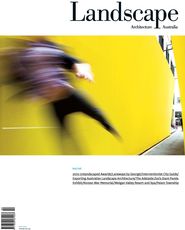
Review
Published online: 8 Apr 2016
Words:
Nicole Porter
Images:
Brett Boardman
Issue
Landscape Architecture Australia, May 2010

